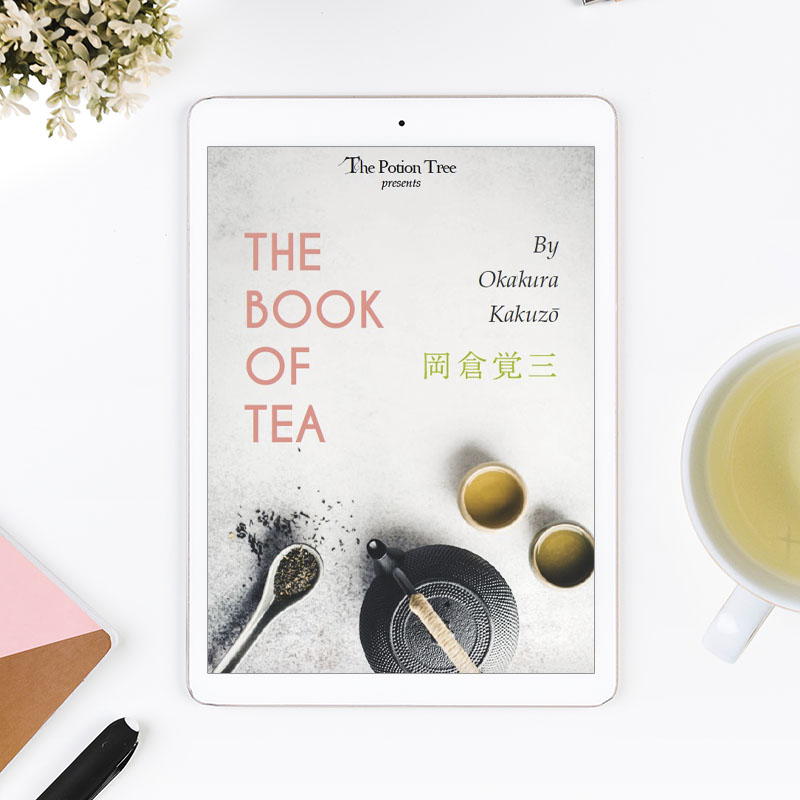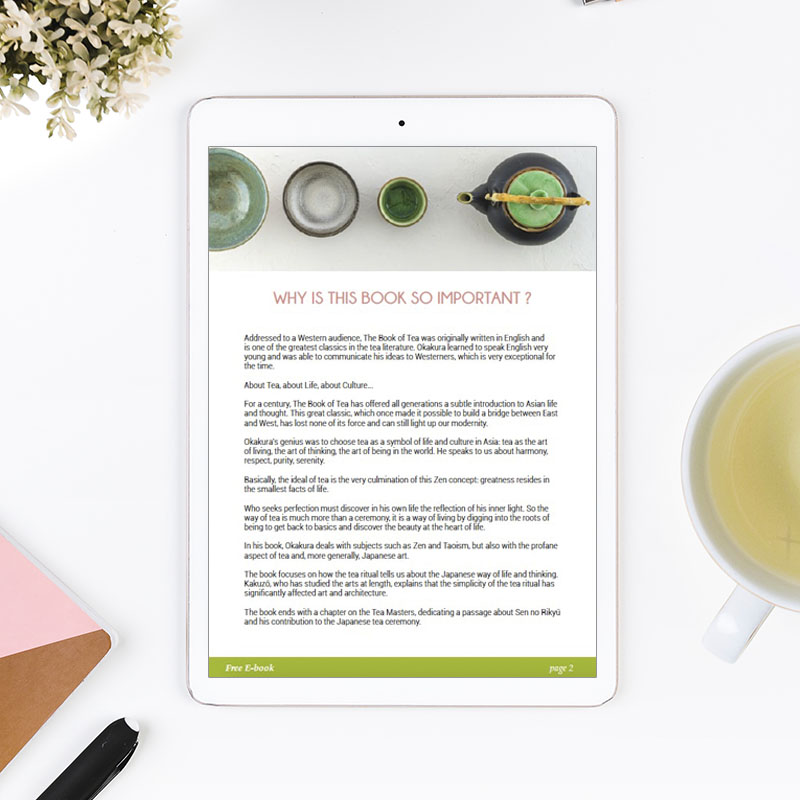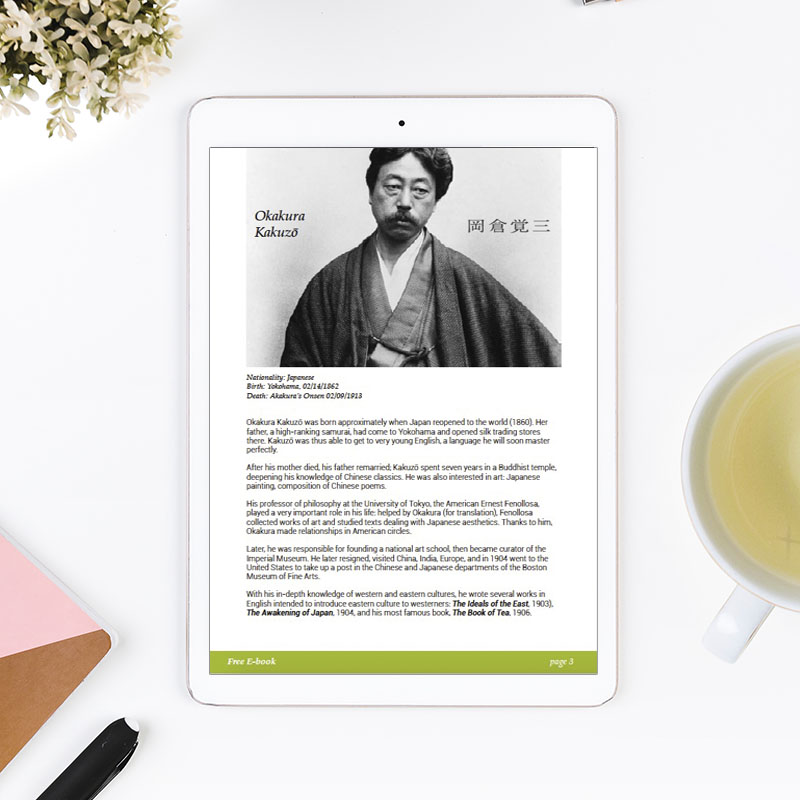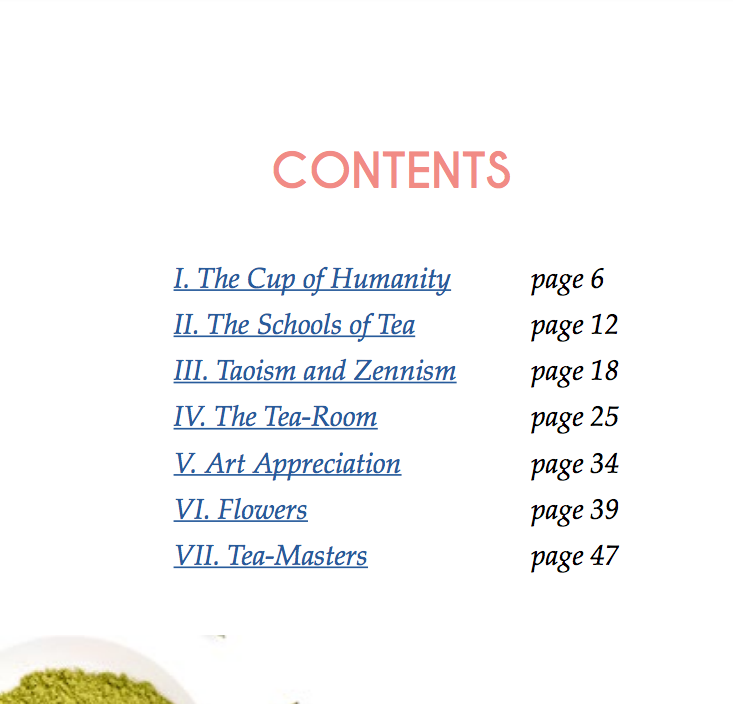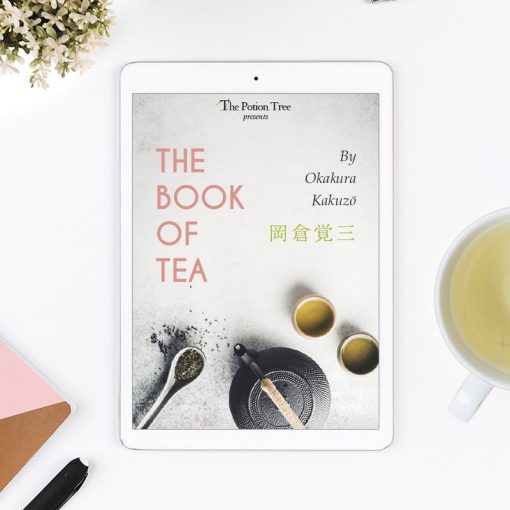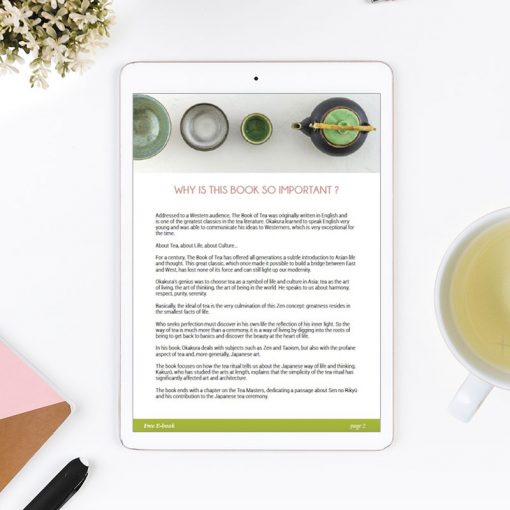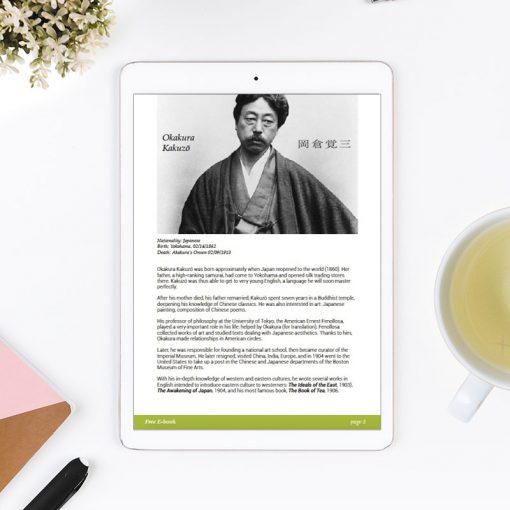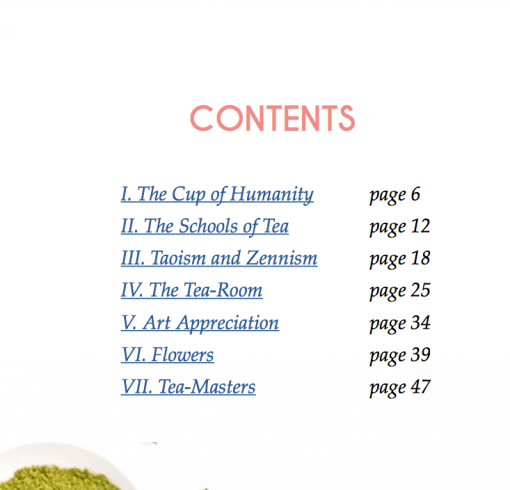Free E-book : “The Book of Tea” by Okarura Kakuzō
$0.00
Written for a Western audience, The Book of Tea is one of the greatest classics in tea literature. Okakura learned to speak English at a young age and communicates his ideas with ease and clarity.
52 pages, you will receive a free download link
About Tea, about Life, about Culture…
For a century, The Book of Tea has offered all generations a subtle introduction to Asian life and thought. This great classic, which helped to build a bridge between East and West, has lost none of its significance and continues to provide incredible insight.
Okakura’s genius was to choose tea as a symbol of life and culture in Asia: tea as the art of living, the art of thinking, the art of being in the world. He speaks to us about harmony, respect, purity, serenity.
Essentially, the concept of tea is the very culmination of Zen thought: greatness resides in the smallest facts of life.
Who seeks perfection must discover in his own life the reflection of his inner light. So the way of tea is much more than a ceremony; it is a way of living. By digging into the roots of being, we can get back to basics and discover the beauty at the heart of life.
In his book, Okakura deals with subjects such as Zen and Taoism, but also with the profane aspect of tea and, more generally, Japanese art.
The book focuses on how the tea ritual tells us about the Japanese way of life and thinking. Kakuzō, who has studied the arts at length, explains that the simplicity of the tea ritual has significantly affected art and architecture.
The book ends with a chapter on the Tea Masters, dedicating a passage about Sen no Rikyū and his contribution to the Japanese tea ceremony.
Learn more about the author, just below

